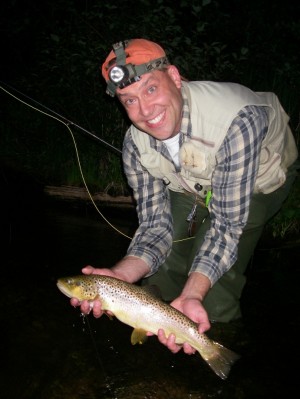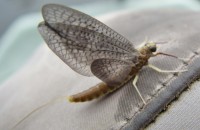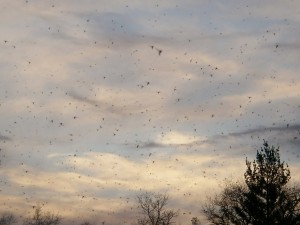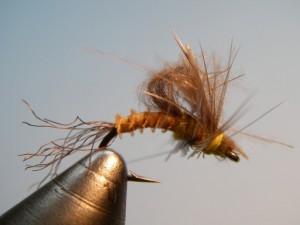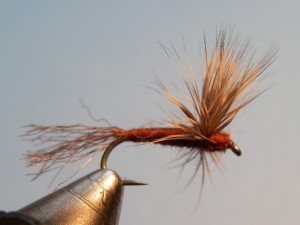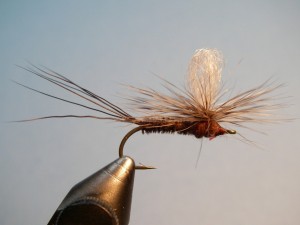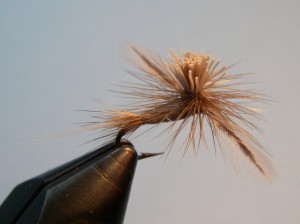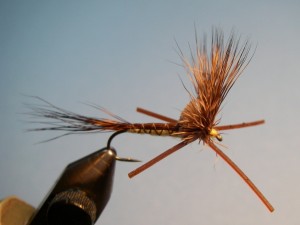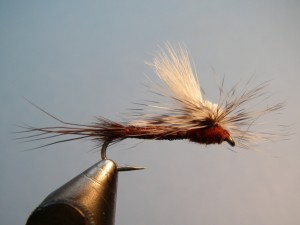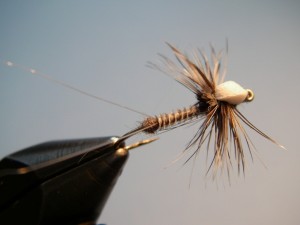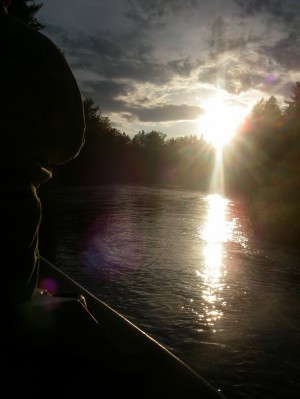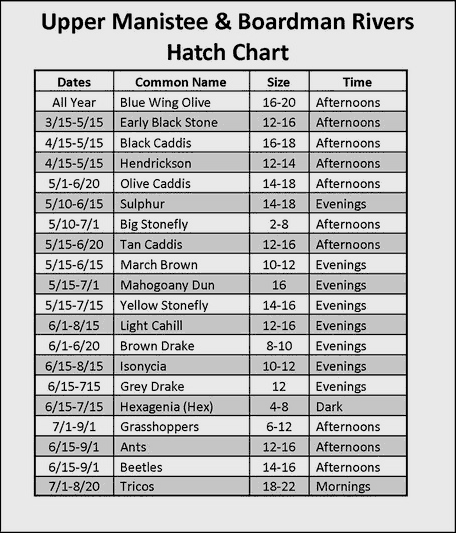It’s match-the-hatch time for selective trout.
Bugs have been fickle, but with any on the water some good fish are eating. Softer water can reveal the bulge of an emerger being eaten or a spinner being sipped, but you have to bring your best drag-free presentation and angling skills as the water is low and clear and when combined with angling pressure, the fish are pretty skittish. I often say you need two things to be successful this time of year: 1. The luck of bugs/rising fish and 2. The technical skills to present to them. Sorry, just one of these isn’t enough.
Sulphurs are just starting up and should build over the next week. Mahoganies and Great Mahoganies belong in your box too, as do caddis just in case our Michigan trout key in on them. I think the last of the Hendricksons have come and gone but have been replaced with some stones. Overwhelmed with pattern choices? This time of year you can often get by with Borcher’s Drakes and Robert’s Yellow Drakes in a range of sizes. Change the batteries in your headlamp and pack the insect repellent – it’s that time of year.
Streamer fishing has been tough– practically having 1/3rd of the precipitation YTD is leaving the roads dusty, the river low and the water clear. Try downsizing your streamers and consider fishing them on floating lines.
Bass and bluegill fishing has taken off with the recent heat. There are fish in shallow and willing to eat your dries, although the bass tend to like sub surface patterns this time of year. Don’t be overly surprised when a pike eats your streamer as they have a post-spawn hunger right now. Fishing a pond or lake is a great way to spend an evening and perfect way to introduce someone to the sport.
Good luck.
Ted
Trout Fishing – May and June offer some of the best streamer and dry fly hatches of the year.
Learn to Fly Fish – Tailor a half-day trip to learning how to fly fish –perfect for beginners.
Fall Steelhead – Some good dates remain in November and into December

